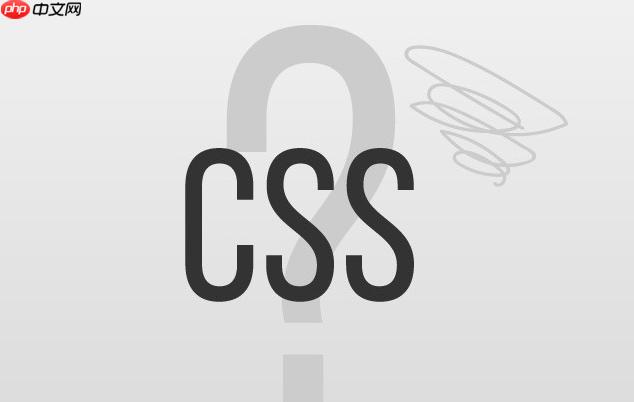使用Flexbox布局可实现内容自适应与底部导航固定效果,通过flex-direction: column和flex: 1使主体占满剩余空间,导航自然置于底部;若需滚动时导航始终可见,则结合position: fixed定位并设置z-index及内边距避免内容遮挡。

固定底部导航在现代网页设计中很常见,尤其适用于移动端或需要常驻操作入口的页面。结合 CSS Flexbox 和 position 属性,可以灵活实现内容自适应、导航栏始终固定在底部的效果。
通过 Flexbox 构建页面整体布局,使主要内容区域自动填充可用空间,为底部导航预留位置。
关键思路:示例代码:
<div class="page"> <header>头部</header> <main class="content">内容区</main> <nav class="footer-nav">底部导航</nav> </div>
.page {
display: flex;
flex-direction: column;
min-height: 100vh; /* 至少占满视口高度 */
}
<p>.content {
flex: 1; /<em> 自动扩展,填充空白区域 </em>/
}</p><p>.footer-nav {
background: #333;
color: white;
padding: 1rem;
text-align: center;
}
如果希望导航栏始终贴在屏幕底部(即使滚动也不移位),可结合 position: fixed。
立即学习“前端免费学习笔记(深入)”;
适用场景:此时仍可保留 Flex 结构用于其他内容排版,仅对导航单独处理。
.footer-nav {
position: fixed;
bottom: 0;
left: 0;
width: 100%;
background: #333;
color: white;
padding: 1rem;
text-align: center;
z-index: 1000;
}
注意:使用 fixed 后元素脱离文档流,可能覆盖内容。需给 body 或 main 添加下边距或内边距腾出空间:
.content {
flex: 1;
padding-bottom: 60px; /* 为固定导航留出空间 */
}
根据需求选择合适方式:
基本上就这些。关键是理解 flex: 1 的“吸满剩余空间”特性,再按需决定是否用 position 强制定位。不复杂但容易忽略细节。
以上就是如何使用CSS Flexbox实现固定底部导航_Flex与position结合的详细内容,更多请关注php中文网其它相关文章!

每个人都需要一台速度更快、更稳定的 PC。随着时间的推移,垃圾文件、旧注册表数据和不必要的后台进程会占用资源并降低性能。幸运的是,许多工具可以让 Windows 保持平稳运行。

Copyright 2014-2025 https://www.php.cn/ All Rights Reserved | php.cn | 湘ICP备2023035733号